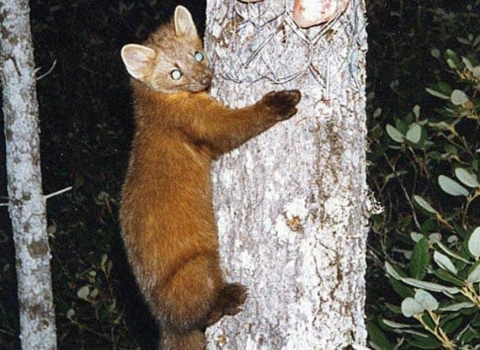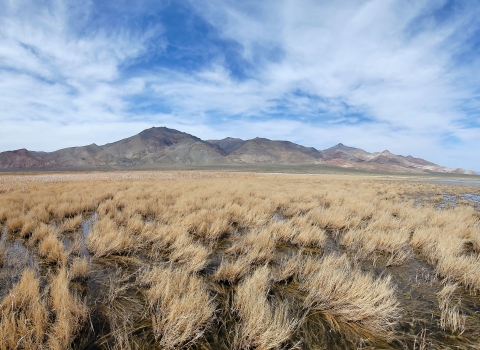Washington, DC – As part of a global initiative to highlight the importance of conserving migratory fish species and aquatic ecosystems, the United States and approximately 60 other countries will celebrate World Fish Migration Day on May 21, 2016. More than 1,500 organizations are participating in the occasion, holding over 400 events ranging from dam destructions and river cleanup activities to educational seminars and fishing events.
“The health of our rivers and watersheds are inextricably linked to the health and well-being of our communities and citizens,” said U.S. Fish and Wildlife Service Director Dan Ashe. “By working with our partners to protect and restore free-flowing waterways, we can improve habitat for migratory fish species while safeguarding critical aquatic resources for future generations.”
Migratory fish such as striped bass, shad, sturgeon, eel and salmon support the diets and livelihoods of millions of people worldwide. However, these fish face a number of threats. Physical barriers—including dams, weirs and road stream crossings—can block migratory fish passages. In addition, these man-made structures can disrupt the natural flow of rivers, which are critical for the health of fish and aquatic species.
“Migratory fish support the livelihoods of people and communities around the world, but human activities impact them along their journey,” said Giulio Boccaletti, Global Managing Director for Water, at The Nature Conservancy. “Thankfully, through collaboration and the use of innovative solutions, we can balance the needs of people and nature. For example, we have seen river restoration projects open up hundreds of kilometers of habitat to sea-run fish while maintaining hydropower production levels. By protecting free-flowing rivers and our oceans, we are also protecting our future.”
Many fish species must travel from rivers and streams to the sea and back to complete their life cycle. Other species migrate within their home rivers to reach critical habitats. Free migration routes for fish are crucial to their survival. If they cannot reach their breeding and feeding grounds, the species will decline and eventually become extinct. This fate has already fallen on many fish species all over the world.
“Fish migration is one of nature’s wonders. Long distant migrants like eels, sturgeons and salmons need both healthy rivers and seas but populations of migratory fish species are declining fast,” said Marco Lambertini, Director General of WWF International. “Free-flowing rivers are key to their survival and under growing pressure as the world continues to develop hydropower and other infrastructures. It is more important than ever to conserve migratory fish on which ecosystems but also jobs and economies depend.”
Around the globe, millions of people are working together to protect and restore aquatic ecosystems. In the United States, river restoration projects such as the Penobscot River Restoration Project in New England have restored thousands of acres of pristine habitat for migratory fish populations. Despite efforts to protect native waterways, an alarming number of migratory fish species continue to decline.
“Over 70% of Europe’s anadromous fish (those that spend most of their lives in ocean waters, but spawn in rivers) are endangered, 95% of the world’s migratory sawfish are gone, migratory eel populations are in decline, and more recently the migratory fish of major tropical rivers like the Amazon, Congo and Mekong are under great threat from hydropower development,” said Zeb Hogan, biologist of the University of Nevada, National Geographic Fellow, and host of Nat Geo Wild's, Monster Fish. “We want people to realize what’s at stake, understand what we’ve lost, and work together to protect and restore populations of these amazing and life-sustaining fish.”
WFMD partners such as the U.S. Fish and Wildlife Service, World Wildlife Fund and The Nature Conservancy, are working together to conserve migratory fish and their habitats for future generations. Over the last 12 years the Service’s National Fish Passage Program has worked with partners across the U.S. to reconnect more than 21,000 river miles, improving potential for fish migration success in the United States.
WFMD events in the United States include the Service’s Flat Fish Migration project and The Nature Conservancy’s Smolt Bolt Run fish count. The public can also help protect migratory fish species by participating in river and beach cleanups, restoring forests and other habitats surrounding rivers and streams, protecting wetlands, and participating in various WFMD activities in their local communities.
The international headquarters of WFMD will be hosted at The Nature Conservancy in Arlington, VA. The European headquarters will be hosted at the ‘Afsluitdijk’ dam in the Netherlands, where partners will open a new fishway for the passage of migratory fish.
For more information about World Fish Migration Day, including a complete list of events occurring in the United States, visit: www.worldfishmigrationday.com.
You can share your own World Fish Migration Day activities on Facebook and Twitter using the hashtag #WFMD2016.


